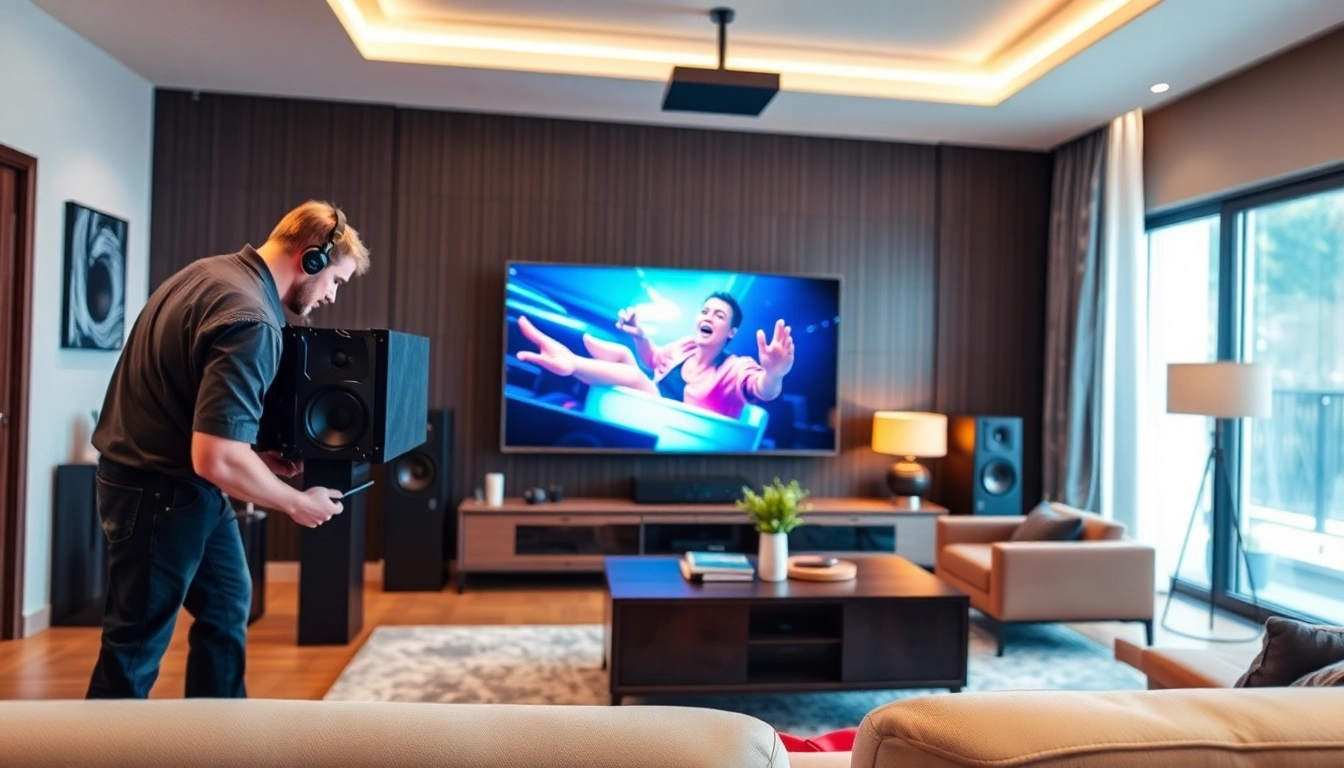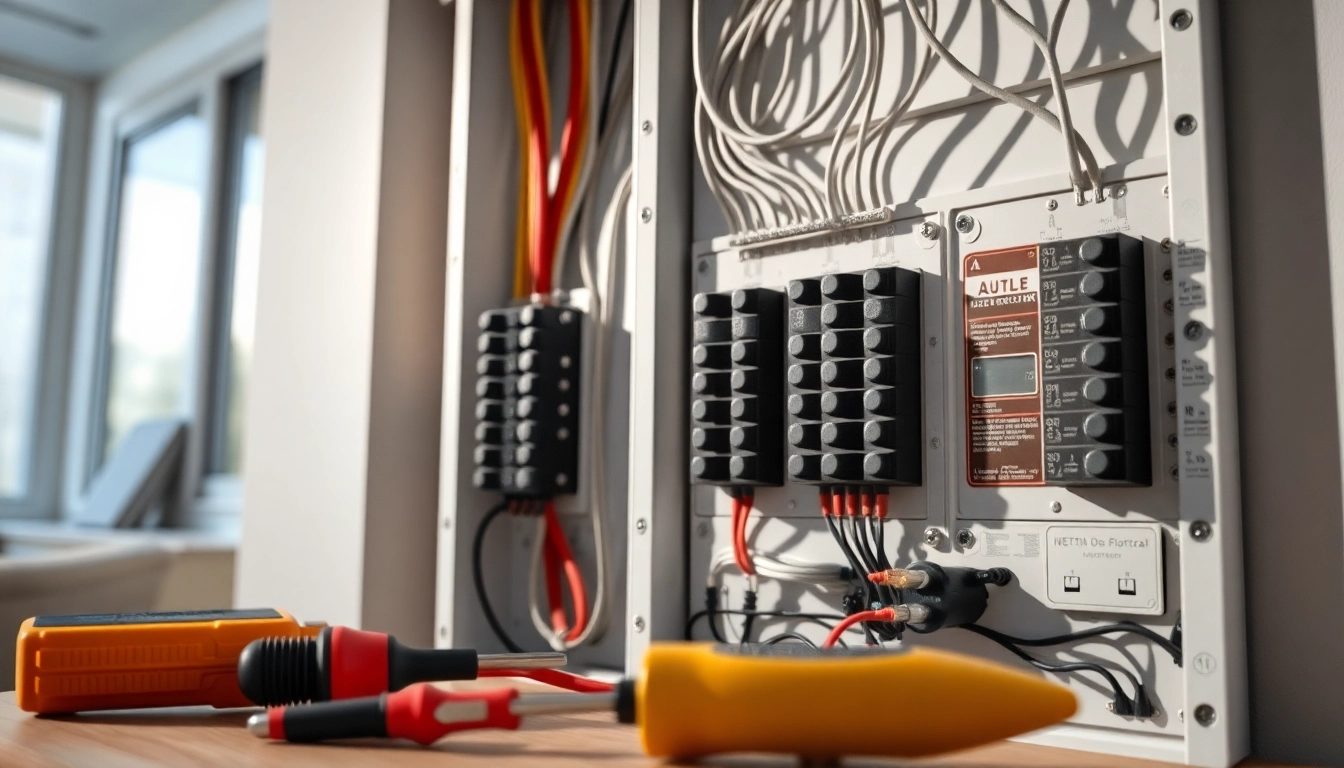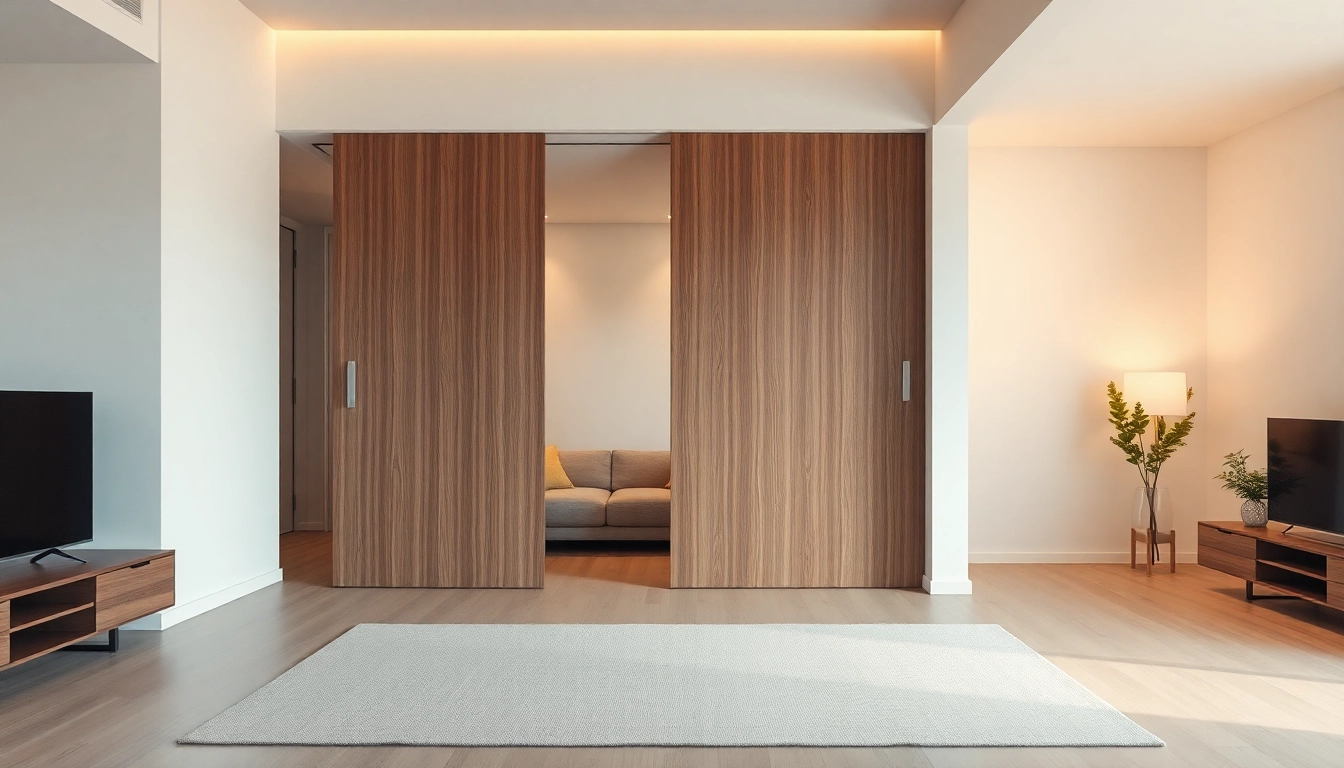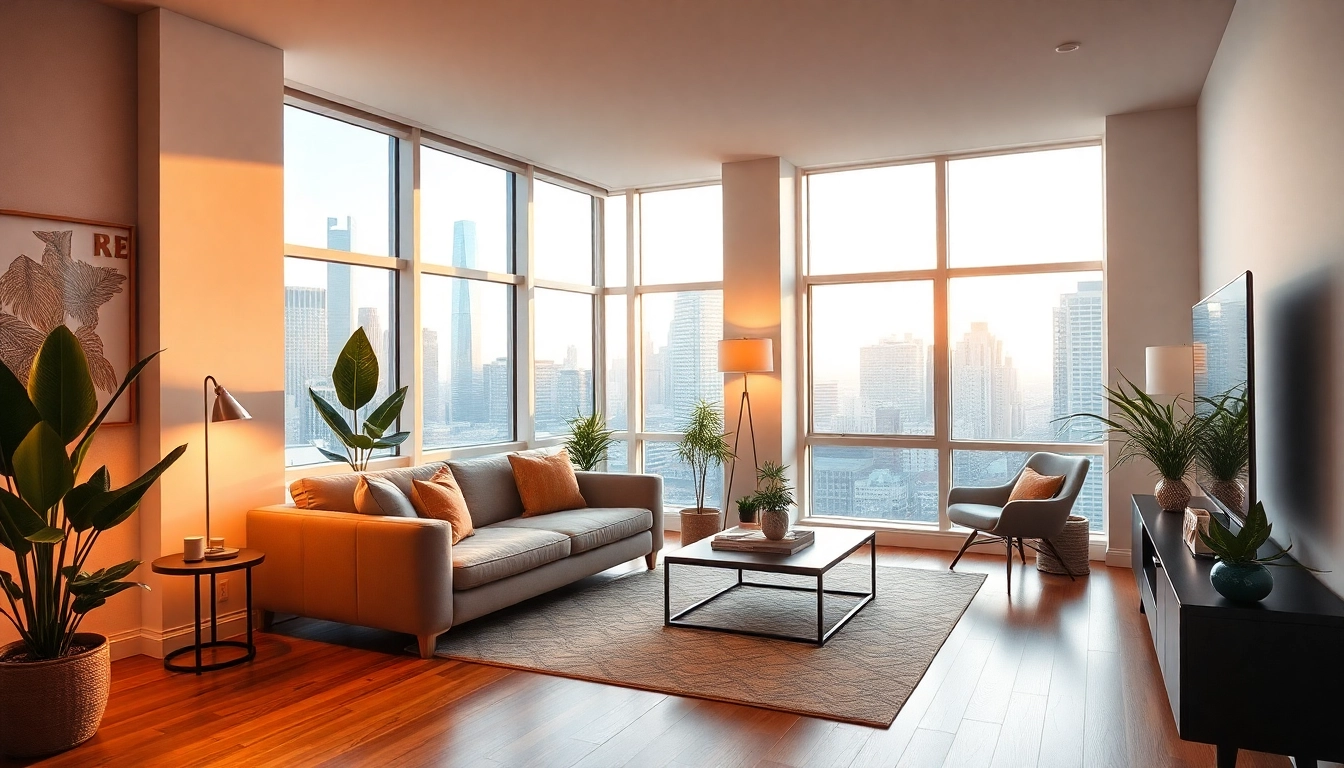Understanding Home Theater Installation
What is Home Theater Installation?
A home theater installation is a comprehensive setup designed to replicate a cinematic experience in the comfort of your own home. This involves the integration of various components such as high-definition televisions, projector systems, surround sound speakers, and streaming devices, all meticulously arranged to optimize both visual and auditory pleasures. Whether it’s for a dedicated theater room or a multi-purpose living space, a well-executed home theater installation enhances movie-watching, gaming experiences, and even music listening.
Importance of Professional Installation
While DIY home theater setups can be enticing, the importance of professional installation cannot be overstated. Professionals have the skills and knowledge to navigate the complexities of different equipment, ensuring that everything works harmoniously together. They also consider elements such as room acoustics and lighting, providing calibration that often exceeds what an untrained eye might achieve. Moreover, a professional installer can save you time, frustration, and ultimately money by avoiding common pitfalls that arise when setting up audio and visual systems independently.
Common Components of a Home Theater
The typical components of a home theater system include:
- Display Device: Options vary from large screen TVs to projector systems, with 4K resolution becoming the standard.
- Audio System: This typically includes surround sound speakers, subwoofers, and a receiver that manages audio inputs.
- Streaming Devices: Devices such as Roku, Apple TV, or gaming consoles are essential for accessing content.
- Cables and Wiring: Wiring and cables may be concealed within walls or along baseboards to create a clean look.
- Seating: Recliner or specialized theater seating can enhance comfort during prolonged viewing sessions.
Finding Home Theater Installation Near Me
Local Services and Providers
Finding reliable home theater installation near me is crucial for ensuring that your system is installed correctly and set up for optimal performance. A quick online search may reveal a variety of service providers, but narrowing down the most suitable ones requires research into local businesses specializing in home theater solutions. Check online directories, local listings, and recommendations from friends or family to compile a list of potential installers.
Evaluating Service Quality
When selecting a home theater installation service, consider the following factors:
- Experience: Look for companies that have been in business for several years and have a portfolio of completed projects.
- Certifications: Technicians should possess certifications from reputable manufacturers, showcasing their expertise.
- Customer Service: Analyze how they address customer inquiries and concerns, especially pre-installation.
- Warranty Options: A reliable service will often offer warranties on both the installation and the products used.
Reading Customer Reviews
Customer reviews provide valuable insights into the quality of service offered by installation companies. Websites such as Yelp, Google Reviews, and Angie’s List can help you gauge customer satisfaction. Look for recurring themes in the reviews, whether they pertain to the professionalism of the technicians, timeliness of service, or the overall satisfaction with the finished home theater. Don’t hesitate to ask for references or contact previous clients directly for a more personal review of their experience.
Costs Associated with Home Theater Installation
Budget Options and Considerations
The cost of installing a home theater can vary significantly based on the components chosen, the complexity of the installation, and the labor fees of the installers. Budget-conscious options exist that still provide an exceptional experience without breaking the bank. Establish a clear budget, and prioritize which components are essential versus those that can be added later. Consider starting with a robust sound system and a quality display, then gradually upgrading other elements over time.
Factors Influencing Price
Several factors contribute to the overall price of a home theater installation, including:
- Component Quality: Higher-end technology will inherently raise costs.
- Room Size: Larger rooms may require additional speakers or more powerful equipment, increasing expenses.
- Complexity of Installation: If the installation requires extensive wiring, structural changes, or custom mounts, be prepared for a higher bill.
- Local Market Rates: Prices can fluctuate based on geographic location and service availability.
Value of Professional Installation
While the expense may deter some from opting for professional installation, the value provided often justifies the cost. Professional installers bring expert knowledge, ensuring that all components interact seamlessly. Furthermore, professional installation can prevent damage to equipment and eliminate the need for costly fixes down the line. Ultimately, the ease, quality, and satisfaction derived from a professionally installed home theater system can enhance your home entertainment significantly.
Designing Your Home Theater Space
Choosing the Right Location
Location is a crucial factor in designing a home theater. Ideally, the space should be designated specifically for entertainment purposes, away from disturbances and distractions. Basements, spare rooms, or even soundproofed garage spaces can serve as ideal locations. Consider not only the available space but also factors like natural light, room dimensions, and proximity to electrical outlets when making your decision.
Essential Design Elements
Designing a functional and visually appealing home theater involves integrating several essential elements:
- Seating Arrangement: Comfort is key in seating. Options like recliners or cinema-style seating arrangements can enhance the enjoyment.
- Screen and Projector Placement: The optimal distance between the seating and the screen or projector is paramount to avoid eye strain.
- Lighting: Adjustable lighting enhances the viewing experience; consider incorporating dimmable lights or smart home solutions.
- Decor: Aesthetic elements like wall paint, soundproofing panels, and even themed posters can set the perfect atmosphere.
Optimizing Acoustics and Visuals
To create the best audio-visual experience, optimizing acoustics and visuals in the room is essential. Acoustics can be improved by using sound-absorbing materials such as carpets, curtains, and wall panels, which can minimize echo and distortion. The positioning of speakers should also be calibrated according to the listener’s optimal seating position, ensuring balanced sound throughout the area. On the visual front, projection screens or TVs should be mounted at eye-level for the best viewing angle, while avoiding reflections and glare from windows or lights.
Maximizing Your Home Theater Experience
Latest Technologies in Home Theater
The evolution of home theater technology continually introduces new innovations that can enhance your experience:
- 4K and 8K Displays: High-definition resolutions provide stunning clarity, essential for an immersive experience.
- Smart Home Integration: Devices that can connect with home automation systems allow for seamless control via voice or smartphone.
- Advanced Audio Formats: Formats like Dolby Atmos provide richer soundscapes that enhance the cinematic experience.
Integration with Smart Home Systems
Integrating your home theater with smart home technology can improve ease of use. Control your theater lighting, sound systems, and video playback through voice commands or mobile apps. Smart home systems allow for automation, such as dimming lights when the movie starts or adjusting audio levels based on content type, creating a streamlined operation for the user.
Maintenance Tips for Long-lasting Performance
To ensure your home theater maintains high performance over the years, regular maintenance is critical. Some tips include:
- Dust Regularly: Dust can accumulate on equipment and connections, leading to potential performance issues.
- Check Connections: Regularly verify that all cables and connections are secure and functioning.
- Software Updates: Keep your software and firmware updated for optimal performance and new features.
- Professional Check-ups: Consider scheduling professional maintenance every few years to catch potential issues before they become significant problems.















Leave a Reply